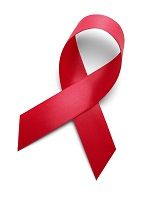HIV: No Spread to Healthcare Workers in Years
Getting HIV from a needle stick or other healthcare workplace exposure was once a much-feared occupational hazard-particularly in the early days of the AIDS epidemic, when getting the virus was considered a death sentence. But there hasn't been such a confirmed case in the US for years, according to a report from the US Centers for Disease Control and Prevention. A new study shows accidental workplace exposures resulting in HIV infection in nurses, doctors, and other healthcare workers are a rarity-with none reported since 2008 and only 1 case between 1999 and 2008.

Getting HIV from a needle stick or other healthcare workplace exposure was once a much-feared occupational hazard—particularly in the early days of the AIDS epidemic, when getting the virus was considered a death sentence.
But there hasn’t been such a confirmed case in the US for years.
A new study shows accidental workplace exposures resulting in HIV infection in nurses, doctors, and other healthcare workers are a rarity—with none reported since 2008 and only 1 case between 1999 and 2008.
Released today in a report in Morbidity and Mortality Weekly Report by the US Centers for Disease Control and Prevention (CDC), a study by M. Patricia Joyce, MD and colleagues at the CDC looked at HIV cases involving healthcare workers reported to the National HIV Surveillance System as due to workplace exposure.
From 1985 to 1999 there were 57 confirmed and 150 cases of healthcare workers acquiring HIV due to workplace exposure. Since 1999 there has only been one case, that of a lab technician who was stuck with a needle while working with a live HIV culture in 2008, bringing the total to 58 cases.
The workers included both paid and volunteer personnel in healthcare settings, whether they did direct patient care or had jobs like security and housekeeping. The exposures were mostly due to skin punctures or cuts (49 cases).
The dramatic drop is due to a wide variety of safety measures, but could also be because HIV patients are getting antiretroviral drugs earlier in the course of their infections. When that happens viral load drops dramatically, to the point where these patients are far less contagious.
Among the advances in worker safety since the dawn of the AIDS epidemic are devices engineered for sharps protection, and stepped up worker training. That includes teaching all workers to assume that body fluids from any patient—not just those with confirmed HIV—could be infectious.
Though Joyce acknowledges that HIV exposure resulting in cases in healthcare workers could be under-reported, she credits prevention and safety measures. Those include better post-exposure management, such as prophylactic treatment of exposed workers with antiretroviral drugs.
According to CDC statistics, of the 58 confirmed HIV cases acquired in the healthcare workplace from 1985 to 2013, the most cases (24) were among nurses, followed by clinical lab techs (16), physicians other than surgeons (6), and non-clinical lab techs (2).
Among the cases classified as “possible” workplace exposure, the most were also among nurses (37) and clinical lab techs (21). But next were hospice care workers (16), people in housekeeping and maintenance (14) and non-surgeon physicians (13) and emergency medical technicians/paramedics (13). Six HIV cases in surgeons were listed as possiblly due to workplace exposure.
Cases were categorized as “possible” when the exact source of the HIV infection could not be confirmed.